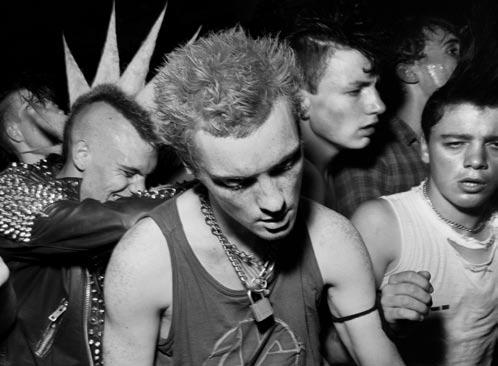
25 minute read
America’s post-war fling with romance comics
n ichael C Weisenbu rg America’s post-war fling with romance comics
Advertisement
Last year, comic book enthusiast Gary Watson donated his massive personal collection to the Irvin Department of Rare Books and Special Collections at the University of South Carolina. As the reference and instruction librarian, I’m tasked with getting to know the collection so I can exhibit parts of it and use the materials for teaching. One of the great pleasures of assessing and cataloguing Watson’s collection has been learning about how comic books have changed over time. Sifting through Watson’s vast collection of 140,000-plus comics, I’m able to see the genre’s entire trajectory.
Before World War II, superheroes were all the rage. Reflecting anxieties over the Great Depression, the rise of fascism and the march to war, readers yearned for mythical figures who would defend the disenfranchised and uphold liberal democratic ideals.
All images from the Gary Lee Watson Comic Book Collection, Irvin Department of Rare Books and Special Collections, University of South Carolina Libraries, Author provided The first issue of Young Romance, which launched the romance genre in 1947.
Once the war ended, the content of comic books started to change. Superheroes gradually fell out of fashion and a proliferation of genres emerged. Some, such as westerns, offered readers a nostalgic fantasy of a pre-industrial America. Others, like true crime and horror, hooked readers with their lurid tales, while science fiction comics appealed to the wonders
of technological advancement and trepidation about where it might lead us.
But there was also a brief period when the medium was dominated by the romance genre.
Grounded in artistic and narrative realism, romance comics were remarkably different from their superhero and sci-fi peers. While the post-war popularity of romance comics only lasted a few years, these love stories ended up actually having a strong influence on other genres.
Though today they are most famous for creating Captain America, the creative duo of Joe Simon and Jack Kirby launched the romance comic book genre in 1947with the publication of a series called Young Romance. Teen comedy series like Archie had been around for a few years and occasionally had romantic story lines and subplots. Romance pulps and true confession magazines had been around for decades.
But a comic dedicated to telling romantic stories hadn’t been
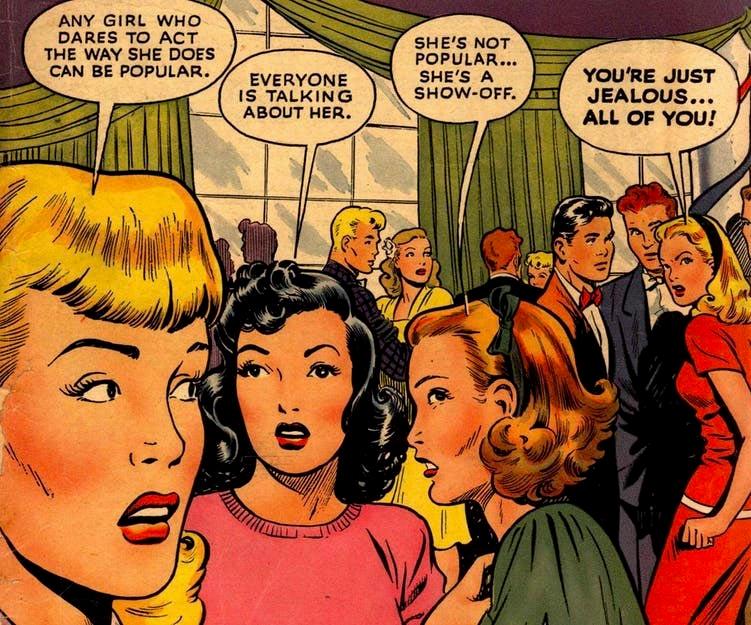
Left: Issue #1 of Teen-Age Romances (St. John, 1949). Below: Superhero, super-romance. Below, left: But He’s the Boy I Love was one of the few romance comic to feature black characters.
done before. With the phrase “Designed for the More Adult Readers of Comics” printed on the cover, Simon and Kirby signalled a deliberate shift in expectations of what a comic could be.
While most scholars have argued that romance comics tend to reinforce conservative values – making marriage the ultimate goal for women and placing family and middle-class stability on a pedestal – the real pleasure of reading these books came from the mildly scandalous behaviour of their characters and the untoward plots that the narratives were ostensibly warning against. With titles like “I Was a Pick-Up!,” “The Farmer’s Wife” and “The Plight of the Suspicious Bridegroom,” Young Romance and its sister titles quickly sold out of their original print runs and began outselling other comics genres. Other publishers noticed the popularity of the genre and followed suit with their own romance titles, most of which closely followed Simon and Kirby’s style and structure. By 1950, about one in five of


all comic books were romance comics, with almost 150 romance titles being sold by over 20 publishers.
The rage for all things romance was so sudden that publishers eager to take advantage of the new market altered titles and even content in order to save on second-class postage permits. Second-class or periodical postage is a reduced rate that publishers can use to save on the cost of mailing to recipients. Rather than apply for new permits every time they tested a new title, comics publishers would simply alter a failing title while retaining the issue numbering in order to keep using the preexisting permit. To comics historians, this is a telltale
sign that the industry is undergoing a sudden change.
One striking example of this is when comics publisher Fawcett ended its failing superhero comic Captain Midnight in 1948 with issue #67 and launched its new title, Sweethearts, in issue #68. In this case, the death of a superhero comic became the birth of a romance comic.
With so many new titles flooding newsstands and department stores, the bubble was bound to burst. In what comic book historian Michelle Nolan has dubbed “the love glut,” 1950 and 1951 witnessed a rapid boom and bust of the romance genre. Many romance titles were cancelled by the mid-1950s, even as stalwarts of the genre, such as Young Romance, remained in print into the mid-1970s.
There was the brief popularity of the sub-genre of gothic romance comics in the 1970s – series with names like The Sinister House of Secret Love and The Dark Mansion of Forbidden Love. But romance comics would never approach their brief, postwar peak.
Among collectors, issues of romance comics are less sought after than those of other genres. For this reason, they tend to go under the radar.
Romance comics, however, featured work by pioneering artists like Lily Renée and Matt Baker, both of whom worked on first issue of Teen-Age Romances in 1949. Baker is the first-known black artist to work in the comic book industry and Renée was one of comics’ first female artists. Prior to working on Teen-Age Romances, they both drew “good girl art” All the good girls love a cowboy. The cover of Cowboy Romances.

– a set of artistic tropes borrowed from pinups and pulp magazines – for several titles. Their work in both genres exemplifies how earlier pulp magazine themes of desire and seduction could readily be applied to newer genres.
After the “love glut,” sub-genre mash-ups nonetheless emerged. For example, cowboy romances were briefly popular. Later, in response to the civil rights movement, Marvel published the 1970 story But He’s the Boy I Love, which was the first story in a romance comic to feature African-American characters since Fawcett’s three-issue run of Negro Romance in 1950. Even after romance comics largely fell out of fashion, the genre’s visual tropes and narrative themes became more prevalent during what’s known as the “Silver Age,” a superhero revival that lasted from 1956 to 1970. Titles such as Superman’s Girl Friend Lois Lane often borrowed heavily from romance for their plots to generate intrigue and tension in the hopes of driving up sales.
Issue 89, in which Lois marries Bruce Wayne, is a prime example of such marketing techniques. Issues such as these were often situated as “what if” narratives that offered readers speculative story lines, such as “What if Lois Lane married Bruce Wayne?” Though they’re generally thought of as separate from the superhero canon, these love stories show that comic book writers had internalized the main narrative techniques of romance comics even if the genre itself was in decline.
But other comics didn’t merely use romantic themes for the occasional gimmick issue. Instead, they made the love lives of their characters a central plot point and a fundamental aspect of their characters’ identities. Comics such as the Fantastic Four and the X-Men rely heavily on the heated emotions and jealousies found in group dynamics and love triangles.
Take Wolverine. Presumably tough and stoic, he’s so enamoured of Jean Grey – and so envious of her love interest, Scott Summers – that you could argue that unrequited love is one of his primary motivations throughout the series.
Thanks to romance comics, even stoic superheroes got bitten by the love bug. CT
Michael C. Weisenburg is Reference & Instruction Librarian at Irvin Department of Rare Books & Special Collections, University of South Carolina. This article was first published at www.theconversation.com
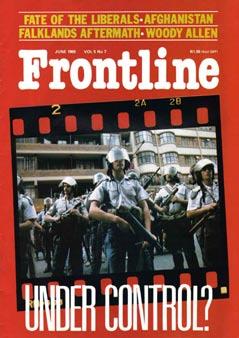















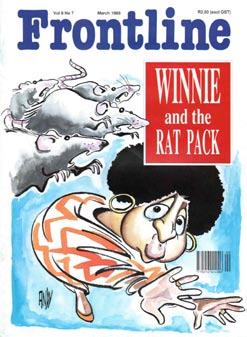
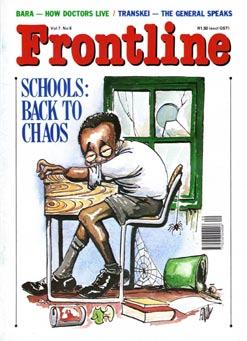
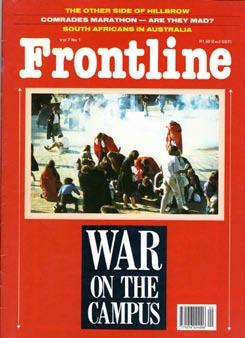


ONE MAGAZINE’S 10-YEAR QUEST FORJUSTICE AND EQUALITY Before I wound up in Toronto and ColdType, I designed Frontline magazine, South Africa’s top liberal-left magazine, for 10 years during the 1980s as it battled for justice and equality during the final years of Apartheid. Now, we’re digitising Frontline, as a case study of prophecy and history. The first digital issues are now on line; more will follow each month. – Tony Sutton, Editor
Read the digital editions of Frontline, exactly as they were published, free of charge, at www.issuu.com/frontline.south

n inh inh Notes from the Chinese border
few men were fishing and glimpsed two women walking their dogs. ost of the time, though, there was no life. Thanks to the coronovirus, much of China is locked inside
For two weeks, I’ve been hugging a border. I type this in Si Ma Cai in Vietnam, just four miles from China, though the trek there is not level, and there’s nothing on the other side but wooded mountains.
Just last week, though, I was in Lao Cai, where each day I could stroll along the Red or Nanxi River and see what the Chinese were doing on their streets and balconies, or inside their windows. Along the bank of the Red River, a few men were fishing against a green backdrop of towering wild grass and bamboos. I fleetingly glimpsed two women walking their dogs.
Most of the time, though, there was no life. Most stores were closed. Unoccupied hotel rooms had their curtains always drawn. At mid-morning, a four-lane avenue leading to a grand gate and steep steps, a magnificent vista, had but one motorbike moving.
Normally bustling, Hekou and the Honghe Hani and Yi Autonomous Prefecture have become unnaturally void and silent, even as their multi-coloured lights still dazzle at night. Thanks to the coronavirus, much of China is locked inside. Though seeing a Chinese in public is not quite like spotting Elvis or Big Foot, it is rare.
I came to Lao Cai from Dien Bien Phu, on a minibus that took ten hours, with stops to pick up passengers and to eat lunch. There was a friendly Chinese who communicated with me via a translation app. About 40, he alternated between looking eager and subdued.
Learning that I was Vietnamese, he asked, “Will you help me to find a wife?”
“Sure, when we get to Lao Cai”. I laughed.
“A beauty pageant winner?” “Yes, of course. There are many.”
“A Vietnamese wife is too expensive”, he cranked up the humour. “Three hundred thousand dong [$13] for just half an hour!” Since a conversation of this nature could only go so far, we didn’t say much more. A few hours later, the Chinese turned his attention to an Argentinian man, sitting right in front of me.
His opening, “I’m from China.
I go back to China tomorrow. I’m only playing in Vietnam. Where are you from?”
When the Argentinian said something nice about China, the Chinese surprisingly retorted, “Dictatorship!”
Most people onboard were headed for trendy Sapa. In 1995, I saw its famous 1935 church still in ruins. It had been shelled by the Chinese during their 1979 invasion. A local told me people had fled in terror to the hills. In 2020, I opened the minivan window to better scan all the new, brightly-lit hotels, restaurants, cafes and bars.
Lao Cai was completely destroyed during this barely remembered border war, and was abandoned for a dozen years. Both sides laid down thousands of mines.
This remote region has long been fought over, however, for it’s a lucrative trade route between Yunnan and Vietnam. Opium shipped downriver while sea salt flowed upstream. Fattening on taxes, the Black Flag bandits were based in Lao Cai. Tai and Hmong Lords staked out territories.
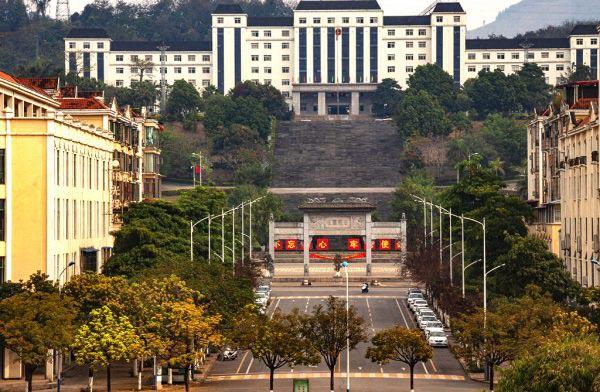
Honghe Hani and Yi Autonomous Prefecture, 2020
Trying desperately to retain their identity, there are ethnic groups here almost no one has heard of, such as the Kháng (down to 14,000 people), the La Chí (13,000), the Phù Lá (11,000) or the Pa Dí (just 2,000). Much larger groups, though, are also losing this battle, and yours, too, of course. Cultural castration is a worldwide pandemic. We’re all being unmanned.
As the British rushed to reach Yunnan via Burma, the French got there first through Lao Cai, in 1886. In 1906, they linked it with Hanoi by a railroad that cost 12,000 Vietnamese and Chinese lives, plus 80 European ones.
When the Englishman Archibald Little came to Lao Cai in 1911, this was what he saw:
LAO-KAI presents the same contrast to Ho-k’ou, that the Model Settlement does to the Shanghai city; on crossing the railway bridge that now unites the two towns, one passes abruptly from filth and disorder into wide macadamised streets lined with shade trees; clean white bungalows, one and two-storied, a small bund with pontoon wharf—a miniature Point de Galle with the same tropical air and vegetation, but also a close, steamy atmosphere due to its situation in a narrow valley distant 265 miles from the sea. There are few or no Chinese in Lao-kai (it costs them about six shillings a head to enter French territory) and, in the siesta hour, in which we landed, there were apparently no inhabitants. The military are stationed on the right bank and have to cross the rushing river by ferry to come into Lao-kai; the piers of a high bridge, solid circular pillars of brick and stone, were erected some years ago, but the idea of completing the bridge seems to have been abandoned. The chief buildings are the offices of the administration, a spacious Custom-house with godowns attached, the offices of the “Messageries Fluviales,” the Post Office and the Hotel Fleury, where we put up, also a roomy military “cercle,” pleasantly situated on a bluff overlooking the river, and a bandstand in the central “Square.” Towards evening, after an enjoyable dejeuner at the hotel, we sat on the verandah listening to a military
band, we having happily arrived on band-day, and felt that in crossing the Nam-ti we had re-entered civilisation; but we pitied the folk whose duties relegate them to this depressing spot, with little to occupy them, no sports, no society, nowhere to go; hemmed in as they are by pathless jungle.
A century later, Hekou has surpassed Lao Cai in tall buildings, array of shops and modernity, for China is no longer mired in “filth and disorder”. Things can reverse fast.
Just before we entered Lao Cai, the Chinese showed me his phone, “Can we stay together at the hotel?”
I didn’t exactly welcome the idea, but thought that perhaps the man was low on cash, and since it was only for one night, maybe I could deal with it. The best solution was to find a place cheap enough so we could each have our own room.
“We’ll find something in Lao Cai”, I answered.
Just like at Dien Bien Phu and Sapa, there was nothing in Lao Cai I could recognise. We got out in the darkness and cold. With excitement and relief, the Chinese pointed to a guest house right over the minibus company’s office, but after one look at its barely lit stairs, I shook my head, then led him down the street.
Sure enough, there were guest house signs nearby. Walking into the first one, I found out that it only cost $7.30 a night, so fine, we were set, but after the Chinese pulled out his passport, the owner said no.
“But he’s been in Vietnam for a

LOST PRINCESS: On the bedroom wall were two pencil-drawn hearts, enclosing heartbroken poems.
whole month, brother,” I protested. “He’s only in Lao Cai to go back to China, tomorrow.”
“No, no Chinese, my kids are afraid.”
Chuckling incredulously, I could say nothing more to persuade him. Since I wasn’t about to abandon my Chinese friend, I asked the owner hypothetically, “So can I stay here? I’m Vietnamese.”
Grimly shaking his head, the man couldn’t wait to get rid of us diseased monsters. Again, we marched into the darkness and cold. “Don’t worry,” I said, “we’ll find something”. and we did, just two doors away.
At Quyen Linh Guest House, a room without a private toilet cost $4.29, so that’s that, for that’s all they had, and it was cheap enough that neither one of us had to hear the other snore, fart or dreamingly babble through the night.
For that price, I didn’t expect much, but my bed didn’t smell funky or sour, and though voices, music or footsteps did occasionally penetrate my thin walls and seemingly nonexistent door, I slept fine.
On a dingy wall, there were even two pencil drawn hearts, enclosing heartbroken poems. The first one began, A small room during a long, desolate night / Suddenly my heart saddens and longs for him / The word wealth sounds so romantic / Squashes my life with its poor girl’s fate. Since age deepens poverty, the poor girl is probably even more destitute, or maybe she’s a princess, intertwined with some toad.
The next morning, I walked sev

GRIM, but fashionable : One ponytailed girl had ‘Love and Courage’ on the back of her hoodie.
eral miles to scope out the new Lao Cai, and before noon, had moved into a better situated and cheerier hotel, though still cheap. I’d stay there for ten days. I wanted to be as close to the border as possible. Before leaving Quyen Linh, I did chat with its owner to learn that he was a native, and hadn’t just lived through the Chinese invasion, but fought against it, as a militiaman. “How much training did you get?”
“Almost none.” “So how did you know what to do?!”
“You know, brother, us Vietnamese hear so many war stories growing up, we became accustomed to it as children.”
Although the Lao Cai region is the second poorest in Vietnam, the city itself has done extremely well in the last two decades, as a key gateway to trade with China, and with a daily influx of Chinese tourists. With the eruption of the coronavirus and the closing of the border on January 29, all this commerce suddenly stopped, so I found myself in a stunned and prostrated city, though not nearly as comatose as what’s across two thin rivers. Many Lao Cai businesses clearly target Chinese. Sichuan dry hot pots are widely available, and at Dang Chau Quan, the menu lists prices only in yuans.
Sign at a burger joint, “CORONAVIRUS / STORE TEMPORARILY CLOSED.” At a health and beauty store, “TO FIGHT AGAINST THE CORONAVIRUS / WE ASK THAT YOU ALLOW US TO WEAR MEDICAL MASKS / WHEN CONDUCTING BUSINESS.” At a Chinese restaurant, “BECAUSE OF THE VIRUS / THE RESTAURANT WILL BE CLOSED TEMPORARILY /
WE WILL ANNOUNCE LATER WHEN IT WILL REOPEN.”
I entered the café at the upscale Muong Thanh Hotel, to find it completely empty, and there was nothing in the pastry case. “There are no pastries”, I said to the cashier. “Will there be some later?”
“There won’t be any all day”; she answered.
Normally, the short bridge between Lao Cai and Hekou is streaming with trucks, private cars, tourists and porters, pushing or pulling ridiculously large loads on primitive wheels. What I saw though, was a nearly always empty crossing. Once, there was a forlorn tourist walking home, and another time, a father and his small daughter entering uncertainty, if not fear, after their too brief vacation.
I saw two vans disgorge Chinese tourists, all looking grim and wearing medical masks. Hardly talking, they wearily walked towards the grand exit gate. Pulling stylish luggage, they were all cheerfully dressed, however, in that casual and adolescent fashion derived from Gap, Old Navy and American Apparel. One ponytailed girl had “LOVE AND COURAGE” on the back of her hoodie.
Surveying the border, I ran into a soldier one afternoon, but he wasn’t in uniform.
“Why are you taking so many pictures, uncle?”
“Ah, just curious! It looks so dead over there.”
Astride his motorbike, he still eyed me suspiciously, “You shouldn’t take so many photos at the border of a friendly country.” He actually said that. Putting my camera away, I opined, “If they run over here, we’ll have a serious problem.”
“But they can’t. We have our patrols.”
“But the border is so long. If this virus gets worse, many of them will decide to flee over here!” “We’ll catch them.” I have my doubts, for smuggling has always been a huge problem along this border. There are many sections where you can just wade or even walk across.
In Lao Cai, I sometimes hired a motorbike taxi guy. Born in 1962, he had had three wives. The first, he left. The second died while pregnant when a car hit their motorbike. The third left him almost a year ago, with their three-yearold daughter. Missing the child terribly, he showed me many photos of her exuberant self, and once almost teared up. His dark face quivered.
“I’m the nicest guy”, he professed, then later admitted he had been in several jails, where he managed to beat up the meanest “bearheads” from just about every province in the Red River Delta. “Why were you in jail?” “Ah, it’s nothing. Just making a living.”
The second wife is most relevant to this piece. Running a smuggling operation, she hired many porters, and got pregnant by one of them. Seeing her belly bulge, the married lover ran away, only to return four years later. Jumping into her bed again, he also had a juicy proposal. Instead of goods, why not smuggle gullible women, for a lot more cash? Many Chinese men were desperate for a wife.
She agreed, and got rather loaded, until a tricked bride escaped back to Vietnam, which landed our smuggler in prison for seven elongated years. Out, broke and SPECTACULAR LANDSCAPE: But it has been deformed by man.

chastened, she somehow found a new man, so there’s a second chance, after all – until that mass of steel smashed into her.
On the minibus from Lao Cai to Si Ma Cai, a woman told me, “Many women from this area got tricked into going to China. Some, we haven’t heard from in twenty years, so we don’t even know if they’re dead or alive.”
Some, she’s still in touch with, “They’re married, with children. We talk through Zalo or Snapchat. They tell me everyone stays inside now, with only one person leaving the house to buy grocery when absolutely necessary.”
An emblematic event from this novel crisis is the massive banquet held by Wuhan on January 18th, for they did this knowing full well 62 Wuhanese had already been infected. Catering to 40,000 families, the organisers wanted to break the world record for most dishes served. In retrospect, this diseased feast was a celebratory funeral for those who would soon die.
Two months into this crisis, the death toll has breached 2,000, with many more to come, almost certainly. This outbreak has triggered some of the darkest speculations, moreover, and even wishes.
Many believe it has been bioengineered, and released into China by the United States. This contention is seemingly supported by the fact that at the time of writing only Orientals, nearly all of them Chinese, have been killed, but if China’s industrial paralysis continues, the American economy will also collapse, so why would Washington trigger this? Already, the disruption to the global supply chain is causing major turmoil.
Others agree that it is bioengineered, yet released by China itself, accidentally. If this is true, why did China invent a bio-weapon that’s aimed at its own people primarily?
Some are cheered by the prospect this coronavirus will kill millions, if not billions, of Orientals.
The wish to see an entire group disappear can’t be that uncommon. This elation will be snuffed out when non-Orientals start to die from the coronavirus.
A universal culling yields another schadenfreude. If life is a competition of all against all, a battle royale, then the last man standing wins. Vain, each loser enjoys seeing others fall, for each death witnessed seemingly adds to his longevity. Laughing, he is not dead.
It is dark now. There are voices outside my window. Earlier, I could hear cheerful bells from the water buffaloes, feeding across the road. In Si Ma Cai, these lumber
ing beasts shit even on sidewalks, so you just get used to it.
Here, the mountainous landscape is indeed spectacular, but it has been much deformed by man. That’s always the first sign of civilisation, then come priests, slaves, temples, a few thoughtful paintings, lots of garbage, fake everything then, finally, some global gargle to allow this exhausted planet to finally heal.
Soon, perhaps all this will die away, then I can finally go to China, to see what’s left of China, or maybe there won’t be any me left, to go to any China. At least I’ve seen China, so to speak, at least much more of it than 14-million congenitally blind Chinese!
Tall grass will grow from our already cracked sidewalks. Roaming free, the water buffaloes will tinkle our bells. CT
Linh Dinh’s latest book is Postcards from the End of America. He maintains a photo blog at www.linhdinh photos.blogspot.com
Trumpocalypse

In this first collection of his Consent Factory essays, C.J. Hopkins irreverently covers the improbable rise of Donald Trump, the political dynamics that led to his presidency, and the media-generated mass hysteria that swept America during his first term in office. “Brave, original, enlightening, and hilarious” (Matt Taibbi, Rolling Stone), the essays in this volume capture the insanity of 2016 and 2017. Trump’s candidacy, the election, the Resistance, “Putin-Nazis,” neo-McCarthyism, fake news, bots, Charlottesville ... the whole mad circus unleashed by America’s “insane clown president.”
Published by Consent Factory Publishing / Price $10.99 / available from Amazon, Waterstones, Barnes & Noble and most other booksellers

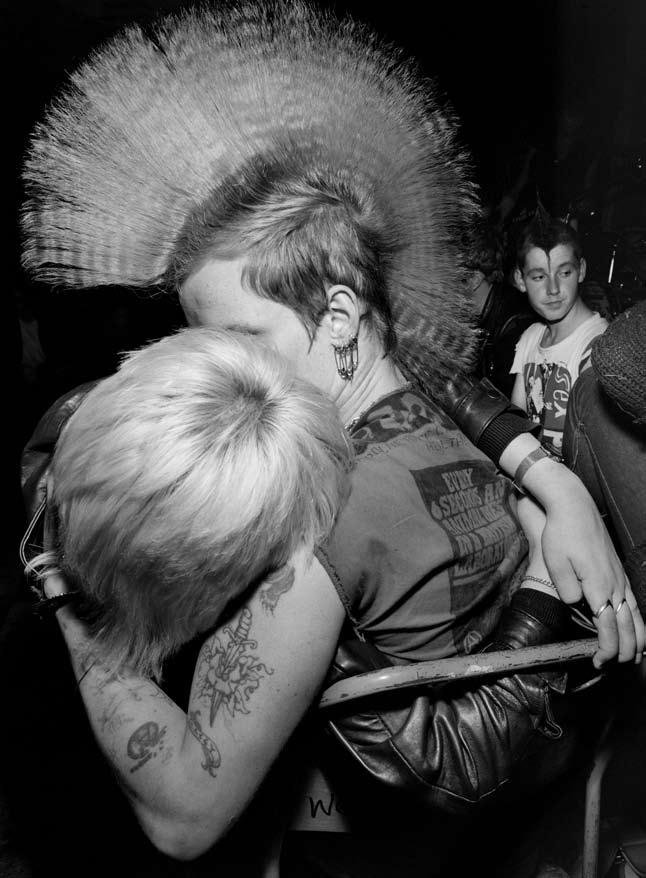
The boys are back
When Chris Killip was photographing the music scene in England’s Newcastle upon Tyne during the early 1980s he was told about The Station, a punk venue in Gateshead, just across the River Tyne. During his visits to the club, he found a remarkably energetic anarchopunk scene, where members of local bands who weren’t playing were in the audience dancing

The Station Chris Killip Published by Steidl www.steidl.de $50
Late in 2016 the son of British photographer Chris Killip discovered a box of contact sheets of the photos his father had made at The Station, an anarcho-punk music venue that thrived from 1981 to 1985 in Gateshead, across the river from Newcastle upon Tyne.
These images of raw youth caught in the heat of celebration which had been forgotten for 30 years have found new life in Killip’s new photobook, The Station, from German publisher Steidl.
The UK miners’ strike had ended a month before Killip’s first visit and there was much youth unemployment in the area. “Most of the punks at The
Station didn’t have a job, and this place, run as an inclusive collective, was so important to them and their self-worth”, he says.
“When I first went to The Station in April 1985”, says Killip, “I was amazed by the energy and feel of the place. Every Saturday that I could, I photographed there. Nobody ever asked me where I was from or even who I was: a 39-yearold with cropped white hair, always wearing a suit, with pockets stitched inside the jacket to hold my slides.
“With a 4×5 camera around my neck and a flash and battery around my waist, I must have looked like something out of a 1950s B movie.” CT
